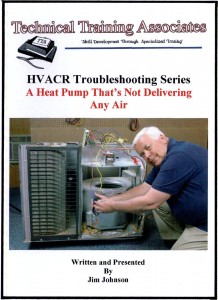While it is not remarkable that these systems fail, what is surprising is that many failures go without being noticed. How is this possible? The short answer is that as long as the building remains somewhat comfortable, the systems are assumed to be working.
When a problem (such as a control valve that doesn’t open allowing a unit to cool) affects comfort, the system operator will typically look for the problem and get it resolved. But when the problem does not directly affect comfort, it becomes both unexpected and unknown. This leads us to the old saying about these systems, “They don’t work, but they aren’t broken.”
The range of system failures is broad, ranging from setpoints, which are not optimum to sever problems. Here are a few common areas were we see problems:
• Economizer controls: We see a lot of problems with the control of economizers on everything from packaged rooftop units to large central systems. The problems range from incorrect setpoints to bad sensors to lack of proper setup. The use of an economizer is fairly straightforward, but improper setup is common and hard to detect.
• Simultaneous heating and cooling: The use of reheat on VAV systems is critical during cold weather to dehumidify and to deal with zones that have high ventilation loads but low occupancy. However, the use of reheat often covers up much larger system problems. For example, we recently evaluated a building where the fans operated continuously, subcooling the entire building and forcing reheat to run all night. Since the building stayed comfortable, the efficiency problems were readily masked.
• Extended hours of operation: It is not unusual for the operating hours of building systems to be much greater then occupancy hours. In fact, many buildings end up running systems 24/7. Frankly, leaving things on at all times is seen as the easiest way to deal with occupant complaints and comfort problems. Of course, doing this results in excess energy for heating and cooling as well as ventilation.
While resolving many of these problems is not complicated, finding them can be. There are a series of tools that we use to find and analyze control system problems. These include:
• Site audits including interviews and equipment inspections.
• Analysis of BAS systems including screens, alarms, and trends (if available).
• Extensive datalogging using either the BAS or standalone dataloggers.
• Evaluation of building level smart meters (when available).
The most important of these tools are the trends, data logs, and smart meter information, which occur over an extended period of time. This allows us to see what is happening at night and on weekends and also how systems react as the outdoor air conditions vary.
Ideally, we would like to see HVAC equipment controls and BAS systems become self-monitoring and correcting. There has been quite a bit of work done in this area, and “continuous commissioning” tools and services are now available in the market. But ideally, buildings should be like your car. The systems should operate properly, and when there is a failure, the operator should be clearly notified. Until this is available in buildings, there will be a need for engineers to act as detectives looking for the unexpected and unknown. ES







